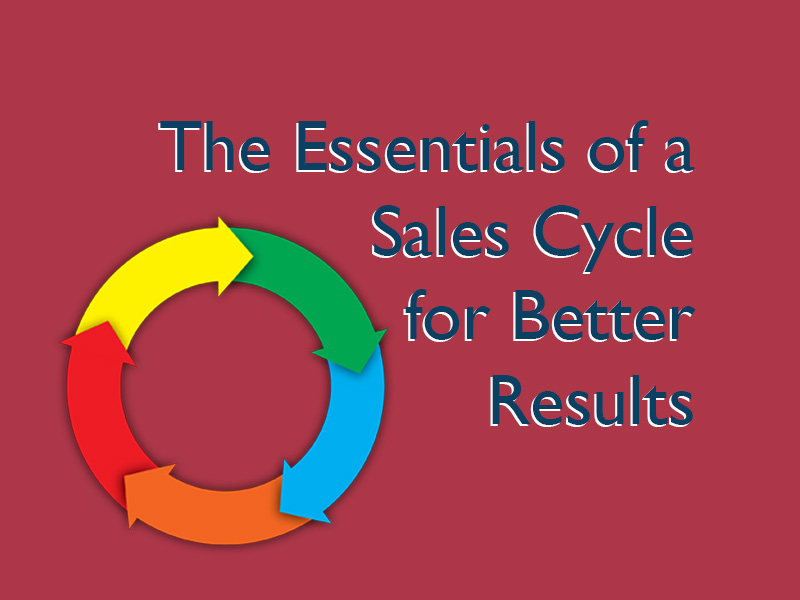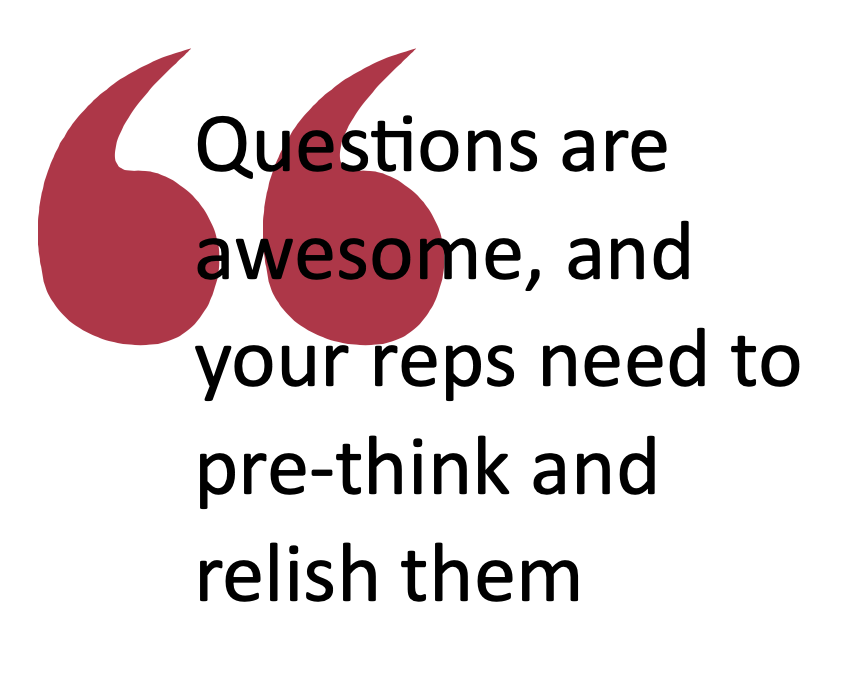
When you head out on a road trip to a place you haven’t been before, you don’t just hop in your car and start driving in the direction you think you need to go. You pull up a map and follow the steps until you get to your destination safely and efficiently. This is very much like how a sales cycle works – there’s just a custom ‘map’ for each company.
As such, a sales cycle is like a series of directions for your sales team. This process outlines the steps they need to take from beginning to end. It’s a clearly defined progression to close a deal with a new customer or client.
So, what do you need to know about sales cycles to help your business grow? Today we uncover how the process works, which builds upon a previous blog we posted about sales development – which is about attending to the details at the very front end of the sales process.
What is a Sales Cycle?
A sales cycle is a set of specific actions your sales reps follow during the selling process that helps them successfully close a deal.
The sales cycle is usually part of a sales methodology, but more based around specific tactics and steps instead of high-level strategy.
Typical Stages of the Sales Cycle
Each stage of the sales cycle might look a little different for each organization. Free to customize these steps as needed.
Today we’ll outline the most typical steps that a rep would follow in a sales cycle.
Step 1 The Art of Lead Generation
This initial stage of the sales process is all about lead generation – finding people who are potential customers. They might come in the door through sales or marketing efforts, or through your own research.
Making sure these prospects are qualified leads via lead scoring is important so no one wastes time on dead ends.
Step 2 Communication with Prospects
In this part of the sales process, it’s typically time to talk directly to your potential clients. You can do this via phone call, email, a message on social media, or through an acquaintance or referral partner. Introduce yourself and tell them just enough about the product or service you’re selling to see if they want to learn more.
At the same time, check with them the information that caused you to reach out to them in the first place, to find out if they really are a good prospect for you.
Step 3 The Discovery Call
Now the prospect is interested, and so are you – great! Time to set up a discovery call to find out more about their business, their needs, and the pain points you can solve for them. You can make a phone call or meet in person.
Just be prepared with a solid list of discovery questions, as the information you’ll get in the discovery call should let you know if they’re a good fit for what you’re selling. Here’s how to avoid wrecking that all-important call!
Step 4 Presenting Your Solution
It’s time to present your product or service to the prospect now as a solution to the things you found in your Discovery. Make sure you involve the decision-makers at the company as well. After all, it doesn’t matter if your prospect loves it if the people who make the decisions don’t agree or aren’t convinced. Part of a great Discovery is to fully understand your prospect’s process for making a decision.
This stage in the sales process may actually consist of multiple presentations to different audiences. Or, you might give multiple presentations as you tailor your product or service to your prospect’s needs when learning more about them.
Step 5 The Delicate Matter of Objections
No sales presentation passes without some questions from your prospects as they do their due diligence. You should train your sales reps so they understand and address common objections. Questions are awesome and your reps need to pre-think and relish them. One of the best ways to do this is to role play with them.
In overcoming objections, you are actually confirming your customer’s intention to buy from you. The great news is that if you’re handling objections, your prospect is seriously considering your solution!
Step 6 The Celebration of a New Customer
This is the most exciting part of the cycle – you get the new client to sign on the dotted line and purchase your product or service. Usually you’ll draw up a contract, answer any final questions, confirm the final price, and make sure you close the deal.
Step 7 The Referrals
However, once you both sign the deal, the sales cycle isn’t quite over. At this point, you should ask for referrals to see if your new client knows anyone else who might be a good fit for your products or services. Even prospects who don’t sign a deal can provide valuable referrals, so asking is important.
Why You Need a Clearly Defined Sales Cycle
Defining and refining your sales cycle gives your sales reps a clear map to closing a sale. It means they know exactly what they should be doing and when they should be doing it.
But, it also helps sales managers and leaders evaluate how full the sales pipeline is and where things are going right – or wrong – in the sales process.
Managing your sales cycle closely lets you look at any existing weak points.
Is there one spot in the cycle where you’re losing too many prospects or potential deals?
Identifying this weakness can help you work to make improvements and boost your sales team’s results. You can also look at how high performing sales reps overcome tricky points in the sales process and share those with your whole team, so everyone is more successful.
Designing a Solid Sales Cycle with 360 Consulting
Are you wondering about weak spots or holes in your sales cycle, but not sure how to address them? It’s important to strengthen your sales cycle and your whole sales process if you want to get maximum results for your business.
Looking for a way to create a stronger, more strategic sales organization with a solid sales cycle, starting with a sales development team?
That’s where 360 Consulting comes in. We’re your partner and guide through every step of optimizing your sales organization. We’ll help with hiring the right people, building the right sales infrastructure like a sales development team, and creating the right sales process that closes more deals in less time.
Schedule your free consultation to find out how we help sales leaders and teams work together to break sales records.

